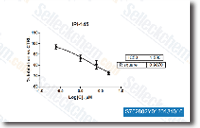Results and discussion Mass and signal flows in cellular interaction networks The reader acquainted to your structural analysis of stoichio metric networks could possibly notice that, while in the situation of metabolic networks, countless within the problems while in the job record of the previ ous area are actually handled from the constraint based technique. One example is, the identification of func tional pathways and learning the input out place habits of stoichiometric reaction networks is facilitated by elementary modes evaluation. Flux Balance Analysis is a different associated tech nique generally applied for phenotype predictions of metabolic mutants. Not long ago, the idea of minimal lower sets has been launched for identifying targets in metabolic networks. Hence, it looks fair to apply these solutions to signaling networks. On the other hand, some pleasurable damental differences from the way the network aspects interact may possibly complicate a direct transfer.
The constraint based framework assumes regular state, whilst in signaling networks a transient conduct can normally be observed. In stoichiometric networks, any arrow lead ing from educts to goods is often observed as an activating connection to the products. Hence, using stoichiometric framework it can be Aurora C inhibitor troublesome or only indirectly potential to express an inhibitory action of Tivozanib a spe cies onto yet another. Likely probably the most considerable distinction is the fact that the edges in meta bolic networks carry flows of mass whereas edges in signal aling networks may perhaps carry mass and or info flow. Naturally, on the molecular degree, any inter action between species inside the cell is usually written as a stoi chiometric equation. Even so, whereas mass flow is connected to a serious consumption of participating com pounds, signal flow is often characterized by a recycling of certain species to ensure these species can mediate the signal transfer constantly.
A normal instance, namely the activation of the receptor tyrosine kinase. illustrates the simulta neous occurrence of mass and signal movement. A ligand binds to your extracellular domain of a receptor yield ing a receptor ligand complex which could undergo additional  alterations. We denote the end result by RecLig. This complex is now ready to phosphorylate one other molecule. Accordingly, M binds to RecLig and gets to be phosphor ylated through the cost of ATP. At the end, M P is launched, recycling also the activated receptor ligand com plex RecLig. The first phase within this scheme can be regarded as being a mass flow. On the other hand, the cycle in which RecLig phosphorylates M, is usually a mass movement with respect to M and ATP, but a signal ing flow with respect to RecLig. since the latter is indeed demanded for driving this cycle but not consumed within the overall stoichiometry. In executing a structural analysis we’re considering extracting signaling paths in the network scheme.
alterations. We denote the end result by RecLig. This complex is now ready to phosphorylate one other molecule. Accordingly, M binds to RecLig and gets to be phosphor ylated through the cost of ATP. At the end, M P is launched, recycling also the activated receptor ligand com plex RecLig. The first phase within this scheme can be regarded as being a mass flow. On the other hand, the cycle in which RecLig phosphorylates M, is usually a mass movement with respect to M and ATP, but a signal ing flow with respect to RecLig. since the latter is indeed demanded for driving this cycle but not consumed within the overall stoichiometry. In executing a structural analysis we’re considering extracting signaling paths in the network scheme.
AMPK Signal
AMPK is formed by α, β, and γ subunits
